You are using an out of date browser. It may not display this or other websites correctly.
You should upgrade or use an alternative browser.
You should upgrade or use an alternative browser.
Restoring and old Neve desk - DONE!!!!
- Thread starter API
- Start date
Help Support GroupDIY Audio Forum:
This site may earn a commission from merchant affiliate
links, including eBay, Amazon, and others.
nhaudio
Well-known member
which deslodering gun are you using?
I've been thinking of buying one for quite some time now.
I've been thinking of buying one for quite some time now.
So, after i also cleaned all the switches in the centersection i left that for now.
I need to go back to it later on since the previous owner disconnected the Monitor Playback and Studio Playback volumecontrols and put them on faders instead.
This is something i want to redeem and put them back in the centersection again.
But more on that later....
The main problem with the desk was that all the 1883 routing modules were missing.
These are of course a crucial part of the desk and its function so i started to look for them everywhere without any luck.
The main reason the previous owner sold the desk was because he could not find these.
After many leads that ended up nowhere i found a person in the US that had some and i managed to convince him to sell them to me.
They were all complete but had the knobs changed out, but i had those in stock so i went ahead and bought them.
This is what they looked like
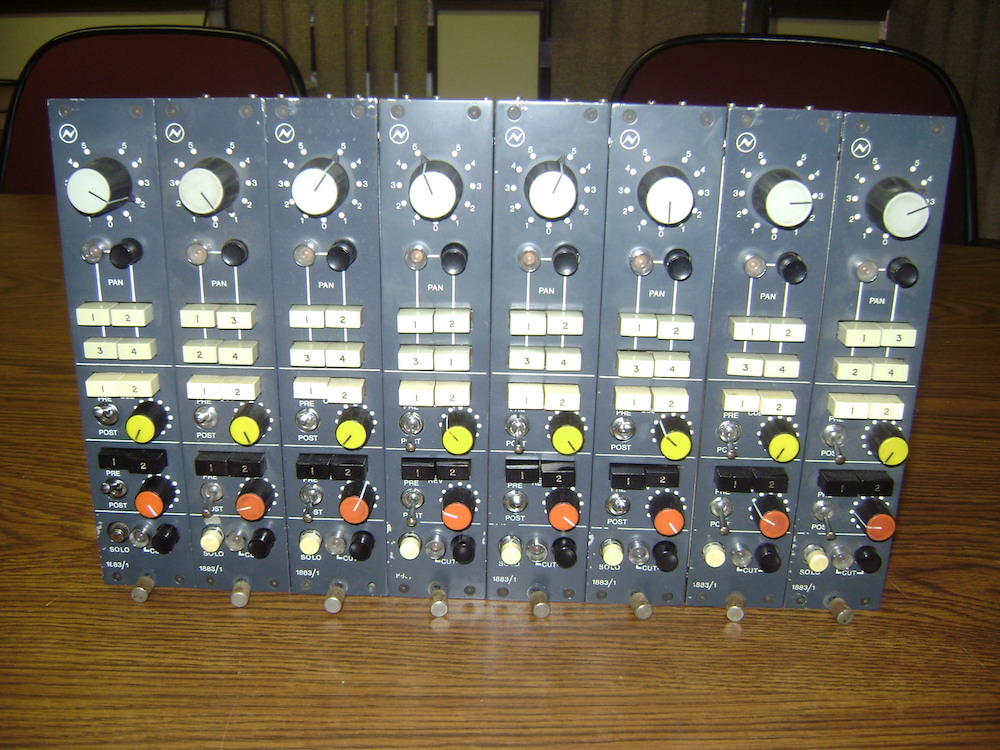
I started with cleaning them up and change the filtercaps inside the modules.
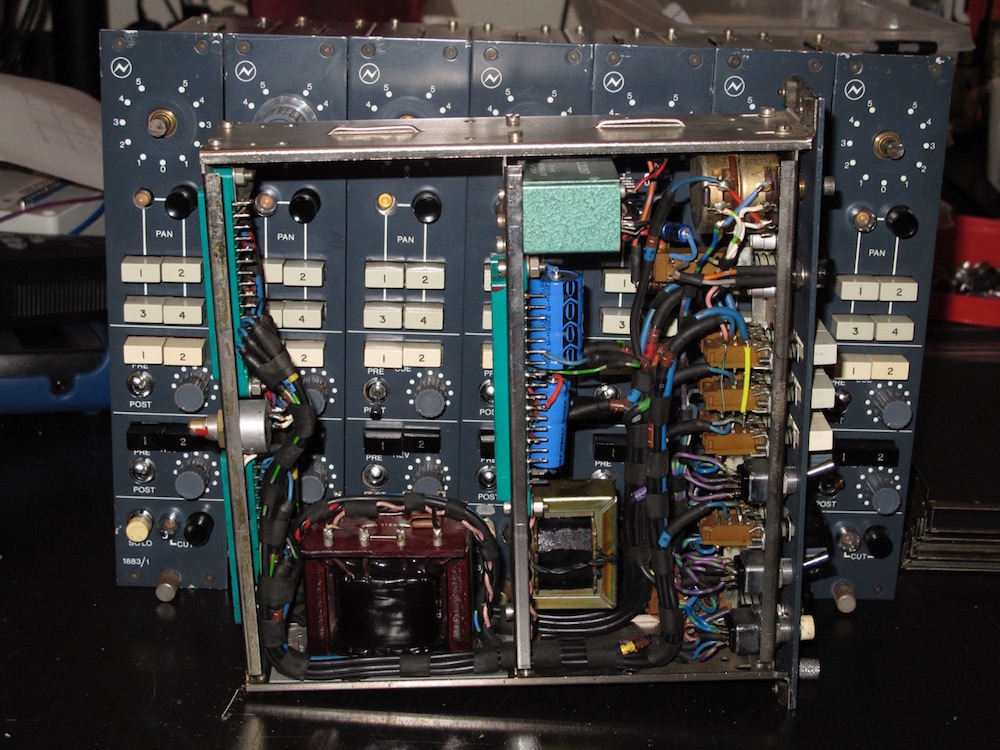
Then i reapped all the BA183 and BA283 cards.
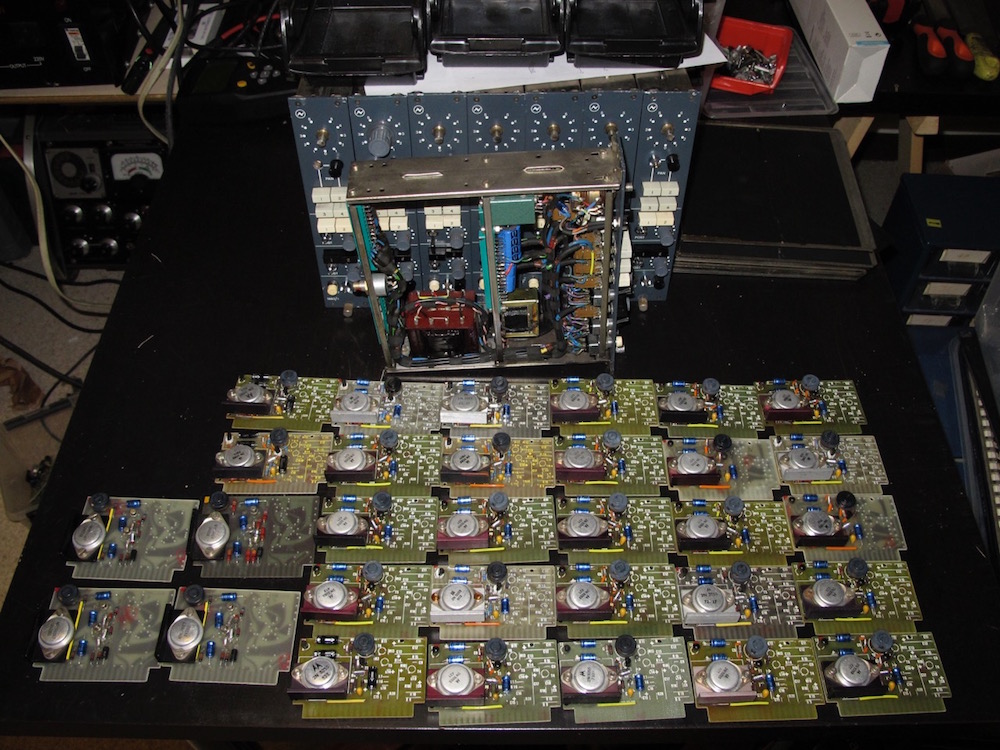
And again i set the bias on all cards with my BA testbox
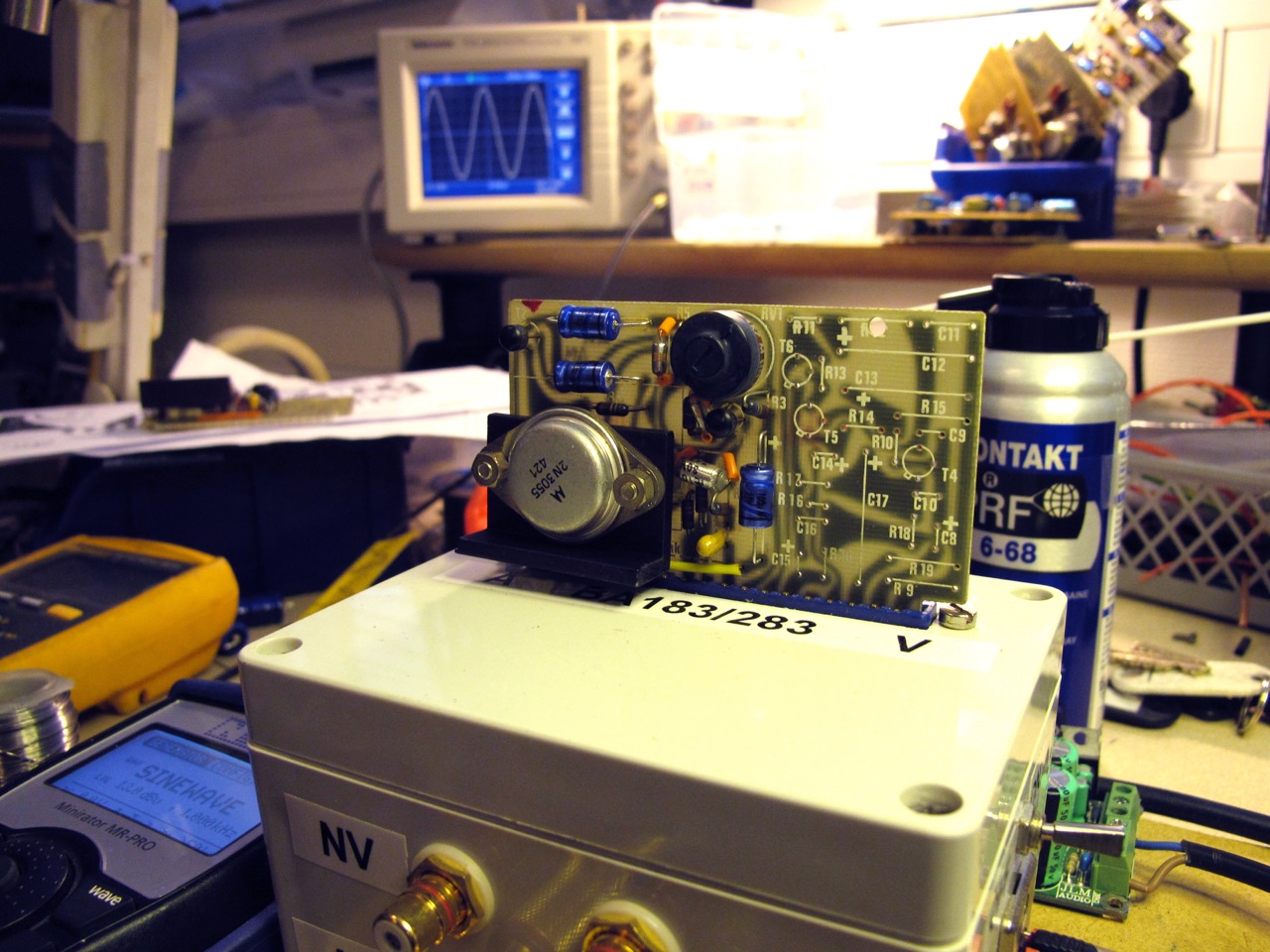
Before:

And after:
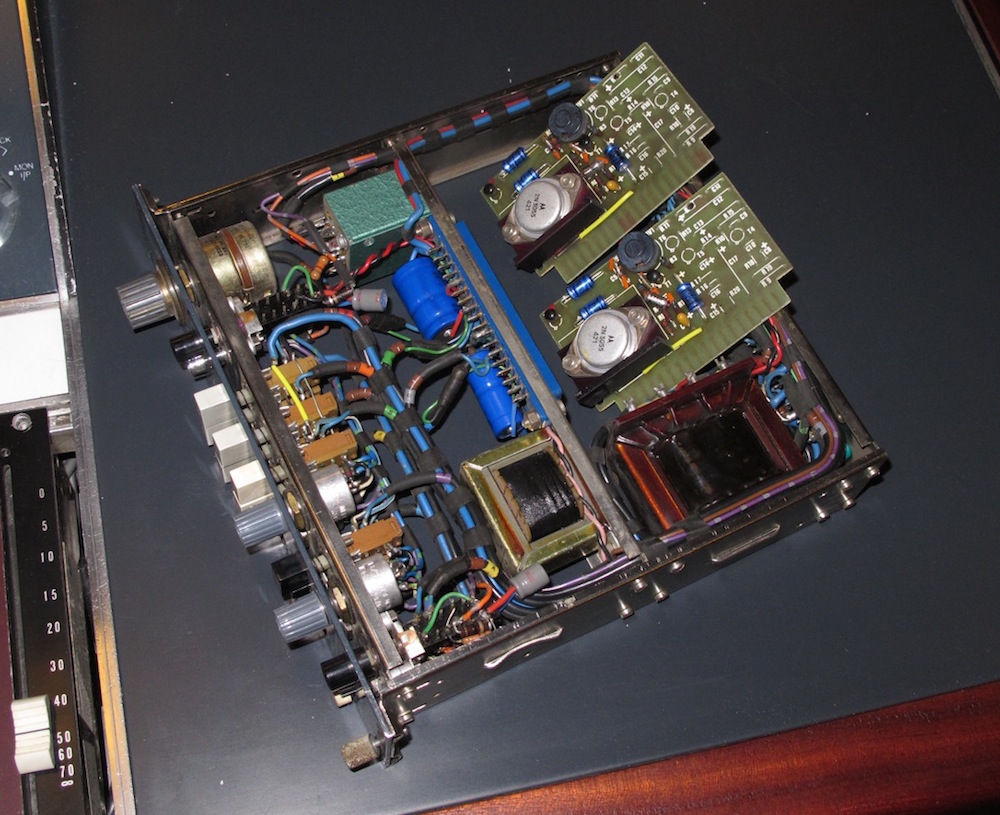
One thing with these modules is that they are slightly later than the desk and uses the St Ives 31267 input transformer while the rest of the desk uses the earlier green Marinairs with the yellow label.
I need to think if i should go all the way and replace the transformers inside the 1883´s so they have period correct transformers or not.
I know, its maybe going a bit to far, but why not when i have these on the shelf
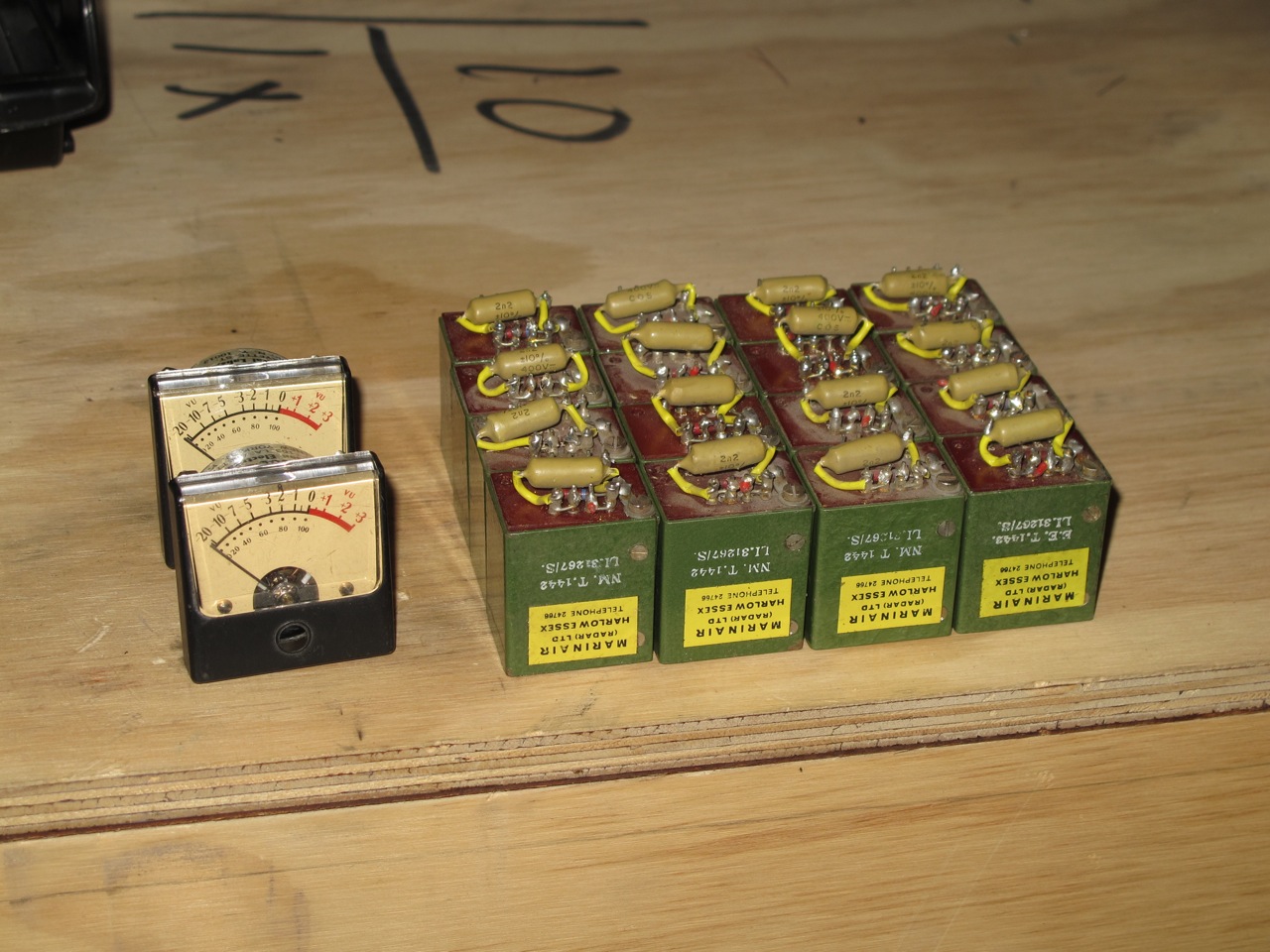
I need to go back to it later on since the previous owner disconnected the Monitor Playback and Studio Playback volumecontrols and put them on faders instead.
This is something i want to redeem and put them back in the centersection again.
But more on that later....
The main problem with the desk was that all the 1883 routing modules were missing.
These are of course a crucial part of the desk and its function so i started to look for them everywhere without any luck.
The main reason the previous owner sold the desk was because he could not find these.
After many leads that ended up nowhere i found a person in the US that had some and i managed to convince him to sell them to me.
They were all complete but had the knobs changed out, but i had those in stock so i went ahead and bought them.
This is what they looked like

I started with cleaning them up and change the filtercaps inside the modules.

Then i reapped all the BA183 and BA283 cards.

And again i set the bias on all cards with my BA testbox

Before:

And after:

One thing with these modules is that they are slightly later than the desk and uses the St Ives 31267 input transformer while the rest of the desk uses the earlier green Marinairs with the yellow label.
I need to think if i should go all the way and replace the transformers inside the 1883´s so they have period correct transformers or not.
I know, its maybe going a bit to far, but why not when i have these on the shelf

musika
Well-known member
This is an amazing photo blog that you are providing of your Neve console. Thanks for posting it! I was especially interested in the photos of those ITT push on push off bank switches. Best of luck with this rebuild.
Thanks Musika!
The cool thing about those switches is that they are fully modular and you cna change out any part in them.
I have in the past found a sealed bag of restoration kits for these that i sometimes use to replace worn out parts, especially the metalbrackets that moves and make the contact between the pins.
Of course it makes more sense to change the whole switch, but works for a quick fix since you dont need to desolder anything.
Nhaudio, i use a Denon SC7000Z which i just love, have made my life alot easier and its very easy to use.
The cool thing about those switches is that they are fully modular and you cna change out any part in them.
I have in the past found a sealed bag of restoration kits for these that i sometimes use to replace worn out parts, especially the metalbrackets that moves and make the contact between the pins.
Of course it makes more sense to change the whole switch, but works for a quick fix since you dont need to desolder anything.
Nhaudio, i use a Denon SC7000Z which i just love, have made my life alot easier and its very easy to use.
After i finished all the 1883 routing modules there were a few issues by the many transformers mounted to the frame.
Some connections had become loose to and from the transformers so i resoldered those, and there were also some cabling to the busbars that were disconnected that were soldered as well.
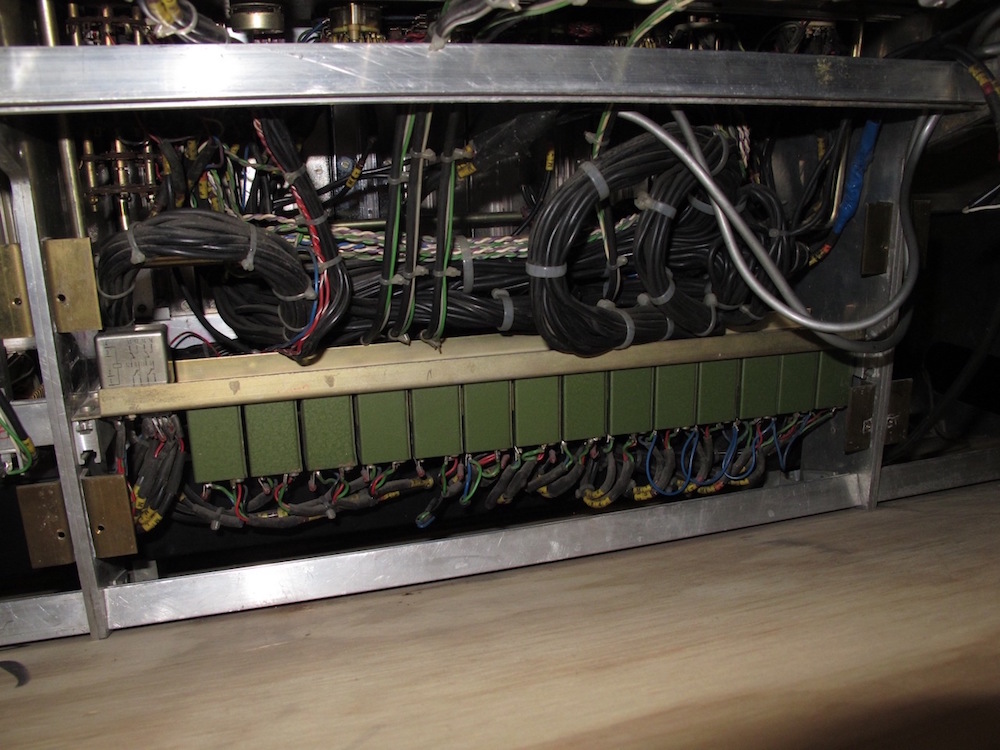
I then started to clean the rest of the frame and especially the Amphenol connectors that were quite dirty.
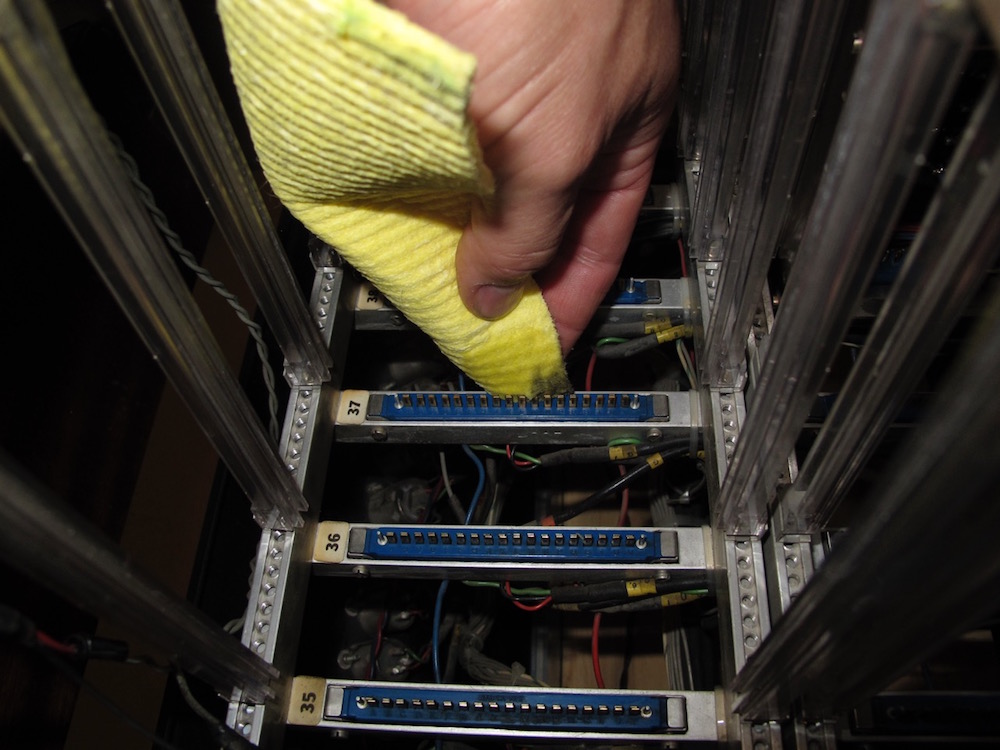
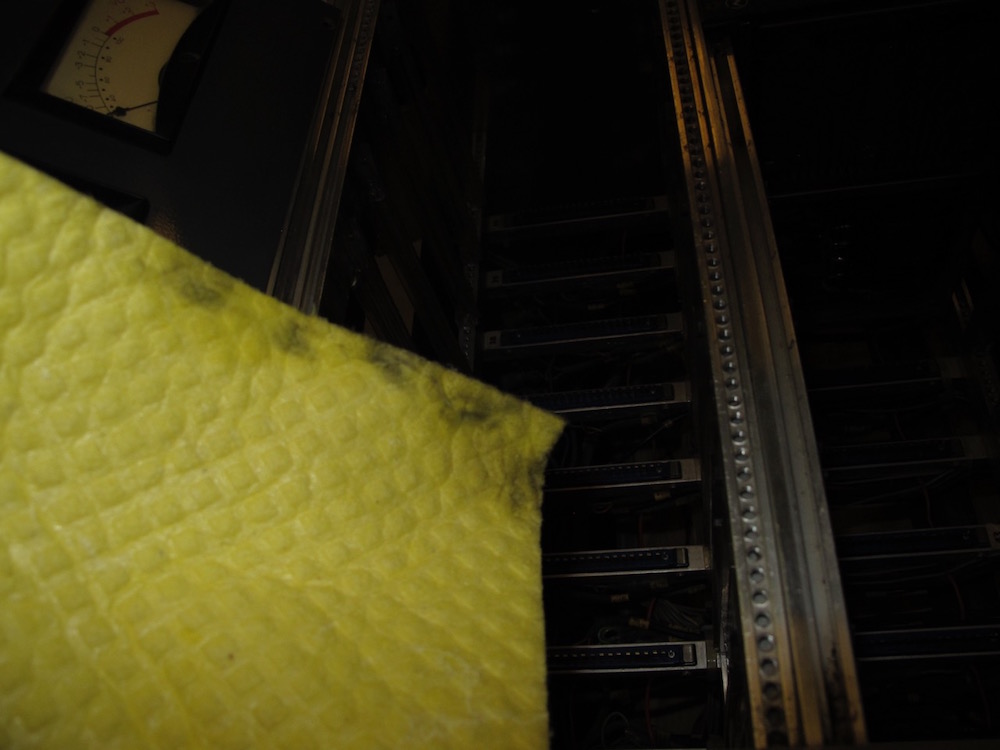
Then i inserted some of the 1883 modules to do some basic testing.
Took me a while to get all the routing right to get some sounds out of the console, but soon enough i was playing music through it!
Found some faults inside a few 1883 modules so i decided to make extender connectors so i could work on the modules out of the desk but still connected.
You also need these connectors to match the gain of the module to the fader you are using for that exact slot.
All part of lining up the console, and i will have to to do this again for the inout modules when they are in place.
Note that i played around with some different lenses on the 1883 modules.
Someone had already changed the original lamps for LED´s and i wanted to find a lense that geled nicely with the design.
In the end i used a fourth variant that is similar to the one the right.
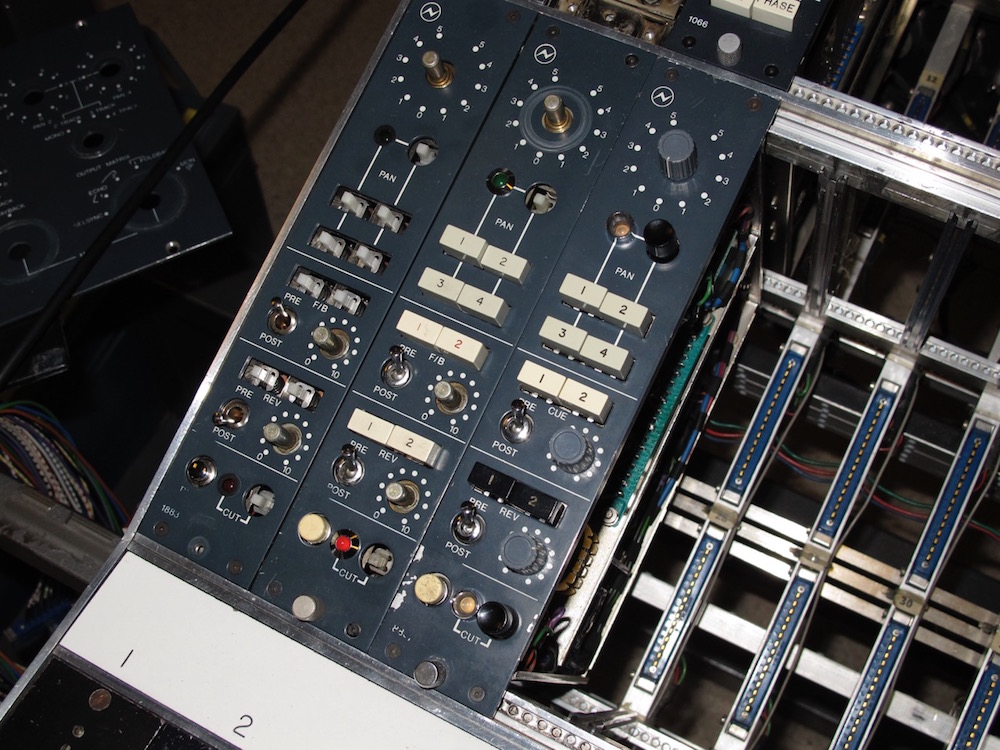
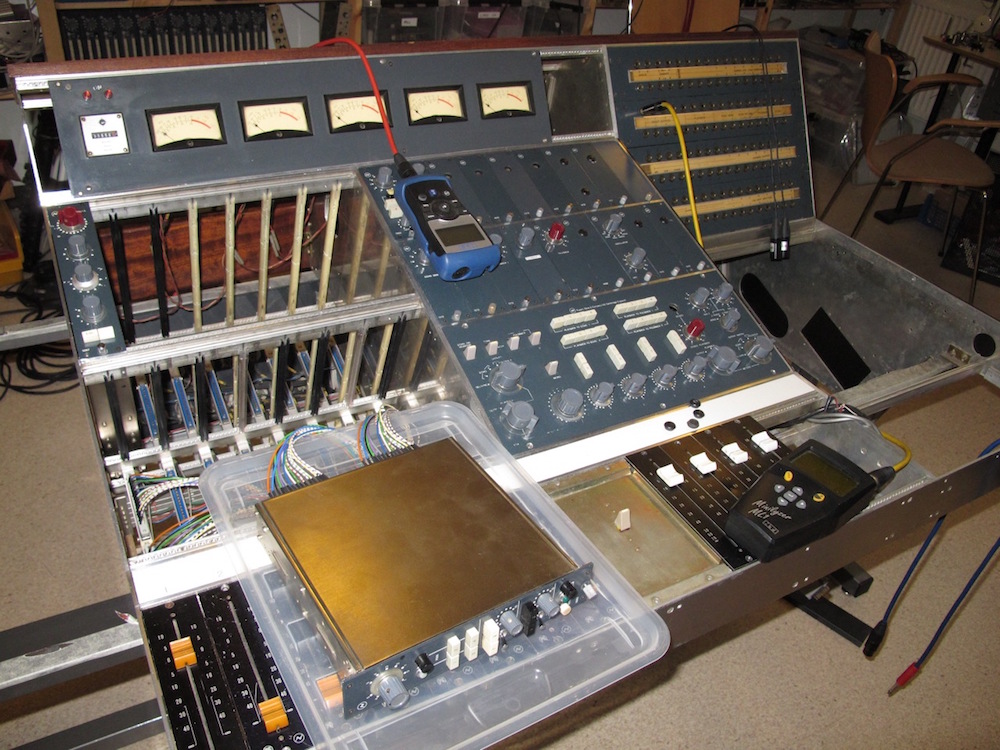
When all this was done i inserted all the modules i had in hand and continued to test the console.
Found some more faults on the centersection, mostly some loose cabling for the meters and such.
But other than that eveyrthing seems to work and it sounds just great!
This is what it looked like after the first phase of the restoration was done!!
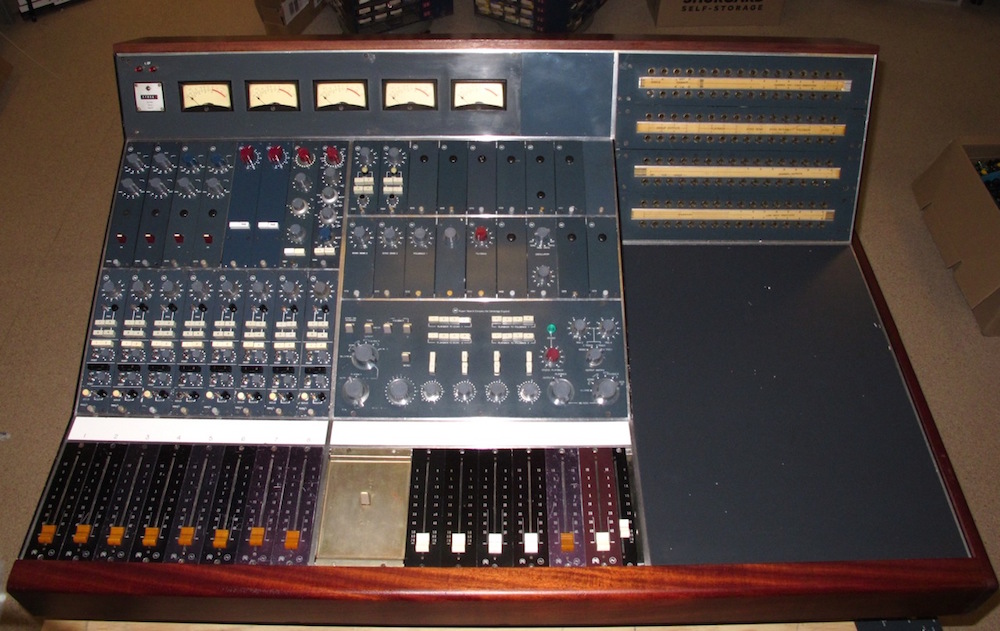
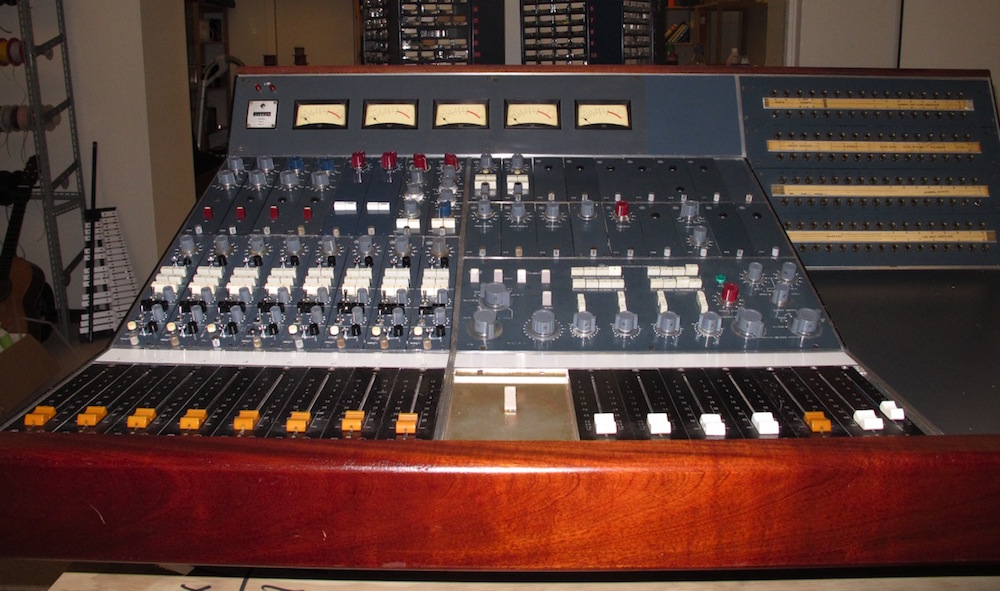

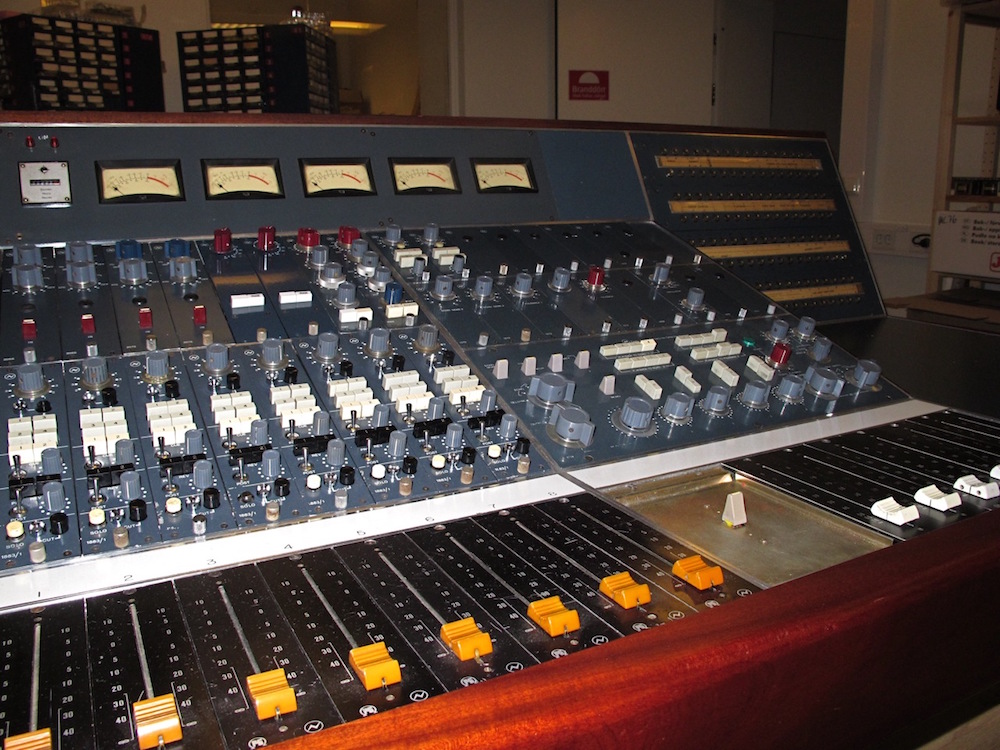
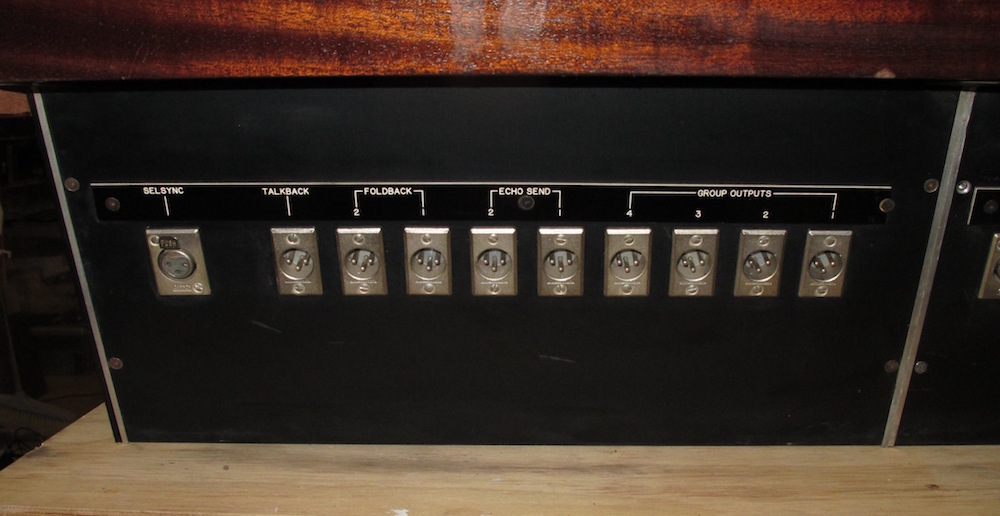
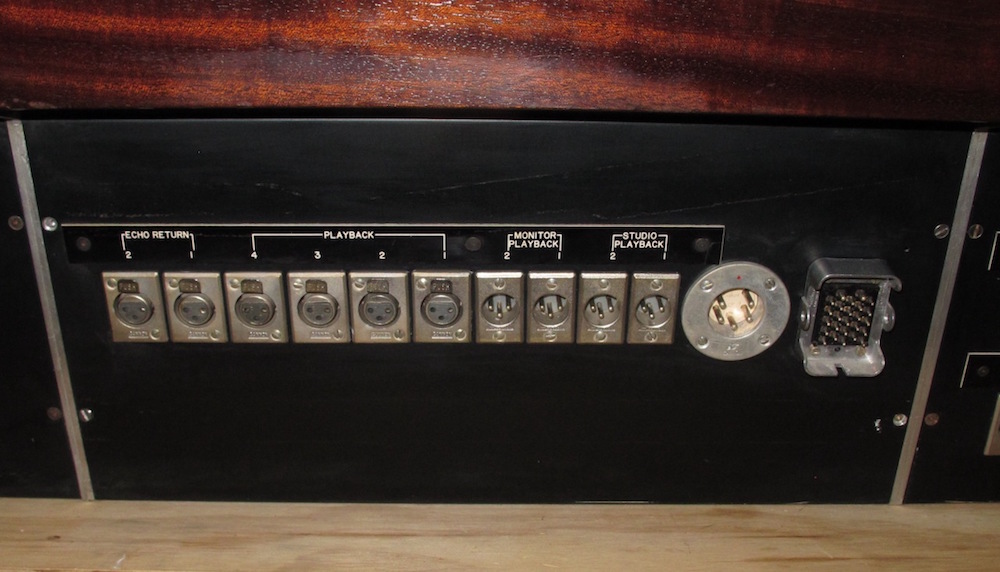
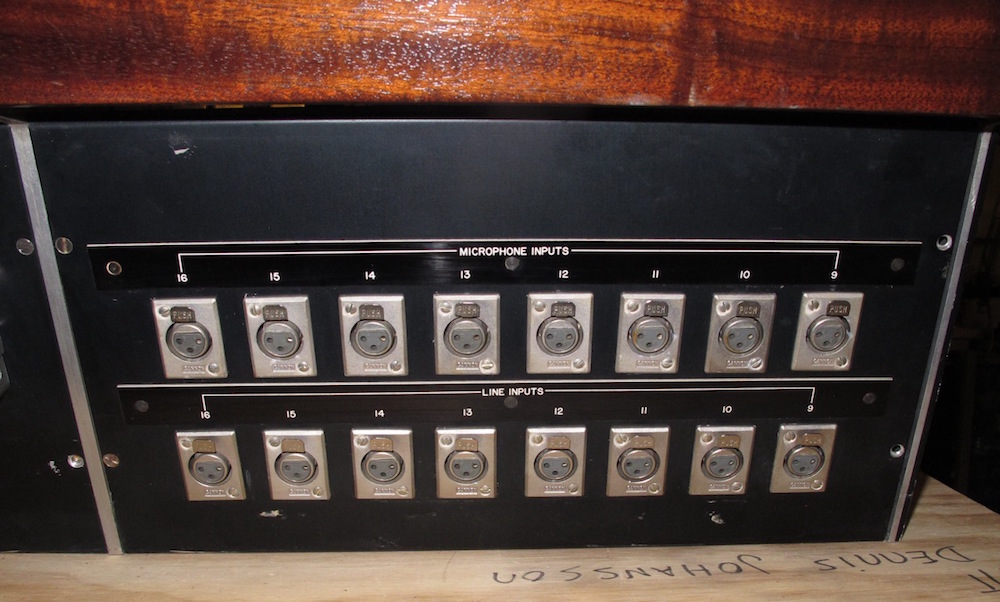
And even though i am very, very happy how this turned out there is something that keeps bugging me about that sawed off bucket.....
Hmm, i think i need to return to the drawing board and see what i can cook up.
Some connections had become loose to and from the transformers so i resoldered those, and there were also some cabling to the busbars that were disconnected that were soldered as well.

I then started to clean the rest of the frame and especially the Amphenol connectors that were quite dirty.


Then i inserted some of the 1883 modules to do some basic testing.
Took me a while to get all the routing right to get some sounds out of the console, but soon enough i was playing music through it!
Found some faults inside a few 1883 modules so i decided to make extender connectors so i could work on the modules out of the desk but still connected.
You also need these connectors to match the gain of the module to the fader you are using for that exact slot.
All part of lining up the console, and i will have to to do this again for the inout modules when they are in place.
Note that i played around with some different lenses on the 1883 modules.
Someone had already changed the original lamps for LED´s and i wanted to find a lense that geled nicely with the design.
In the end i used a fourth variant that is similar to the one the right.


When all this was done i inserted all the modules i had in hand and continued to test the console.
Found some more faults on the centersection, mostly some loose cabling for the meters and such.
But other than that eveyrthing seems to work and it sounds just great!
This is what it looked like after the first phase of the restoration was done!!







And even though i am very, very happy how this turned out there is something that keeps bugging me about that sawed off bucket.....
Hmm, i think i need to return to the drawing board and see what i can cook up.

$14.99
$16.98
Gikfun Upgraded USB Mini Amplifier Electronic Transparent Stereo Speaker Box Sound Amplifier DIY Kit for Arduino EK1918
Gikfun_Official_Store
ruffrecords
Well-known member
Green with envy.
Cheers
Ian
Cheers
Ian
If the Neve would knew what will be the price of single tranny after decades, probably you will have now bare wires as "interfaces" and isolators 
I hope you have a real fun with restoring it!
I definitely would have
It's even nice to view pics only from various phases of work
I hope you have a real fun with restoring it!
I definitely would have
It's even nice to view pics only from various phases of work
DerEber
Well-known member
Great and I think you are realy fast!
I am not realy that fast!
I actually started the restoration several months ago and just took pictures all the way.
Havent realy had time to post the until now.
So, even if i was happy with the work i had done so far, that sawed off bucket did not give me any peace of mind....
I just had to restore this desk back to its former glory, it realy deserved better than to be an amputee, so i made up my mind and went back to work....
First i removed one of the sidepanels and did some basic measurements (please be gentle even though i wrote the measurments in cm..... Will not happen again!)
With that i created a cad drawing with the help of my friend and after several revisions we had a verison that was extremely close, if not identical to the original panel.
Off to the metal shop.....
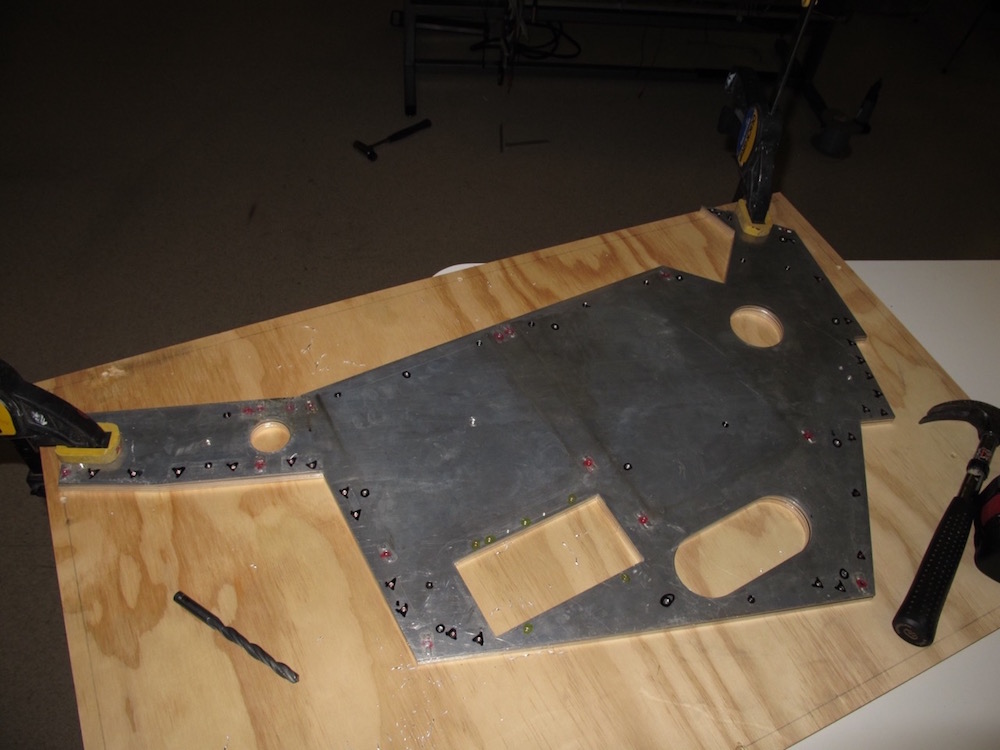
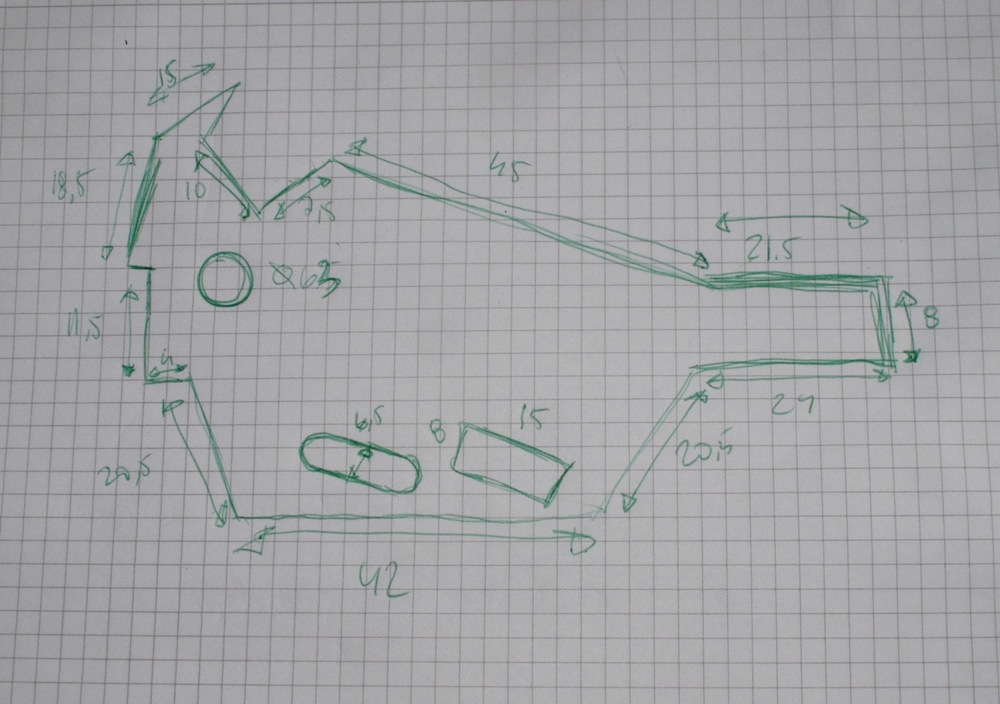
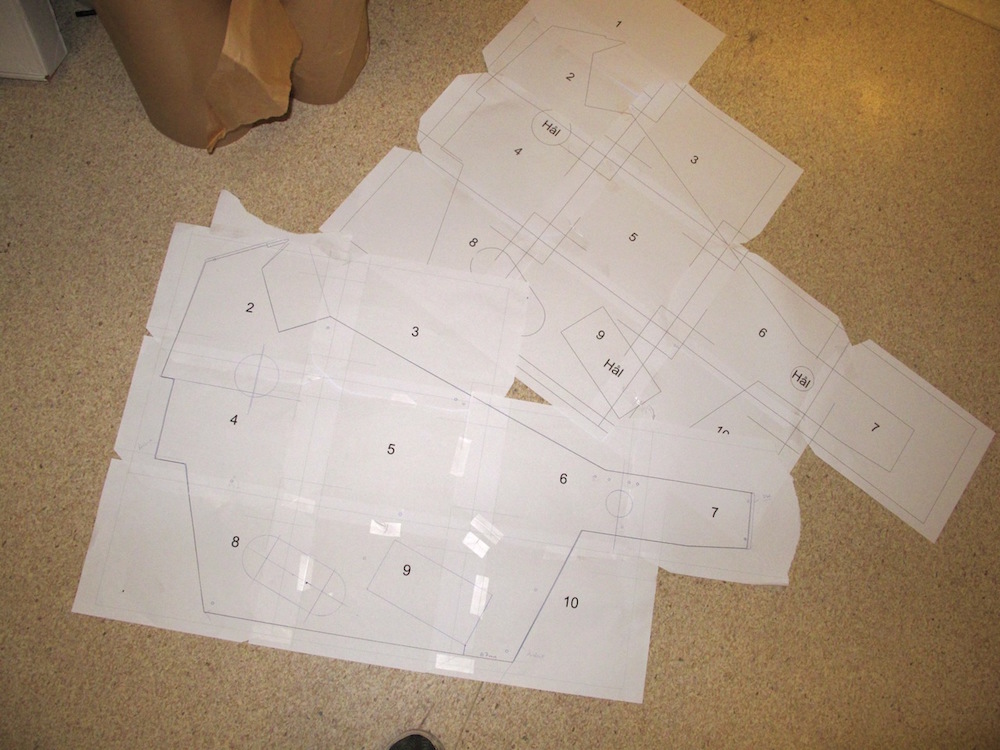
I actually started the restoration several months ago and just took pictures all the way.
Havent realy had time to post the until now.
So, even if i was happy with the work i had done so far, that sawed off bucket did not give me any peace of mind....
I just had to restore this desk back to its former glory, it realy deserved better than to be an amputee, so i made up my mind and went back to work....
First i removed one of the sidepanels and did some basic measurements (please be gentle even though i wrote the measurments in cm..... Will not happen again!)
With that i created a cad drawing with the help of my friend and after several revisions we had a verison that was extremely close, if not identical to the original panel.
Off to the metal shop.....



Baltazar
Well-known member
Fantastic work!!!
Lycka till!
Lycka till!
Amazing work! Lykke til!
Thank you all!
Och tack till mina Svenska vänner!
Next up was doing some sidepanels at the metalshop.
It was easier and cheaper than a thought doing lasercut panels from the cad drawing.
The original Neve panels were made 3.2mm alu but could only find 3mm these days so went with that.
Not sure why Neve used so many inch related measures in their production, Ian do you know?
The first thing i had to do though was to build a new stand for the desk that would incorporate the new bucket.
Luckily i have a friend who owns a 8014 so i could study that and make up a drawing so it would look more or less the same.
These early desks and the 8014 uses a stand where the whole frame sits in it like a cradle.
Not the best design in my opinion since you can create sag in the middle from the wheight, so the frame have to be sturdy.
It is also hard to get the cradle leveled when you weld it, something i would notice a bit further on....
But there are no other options for this type of frame so i went ahead with the original design.

Next up was to remove the original sidepanel and dryfitting one of my new ones.
Looks good!
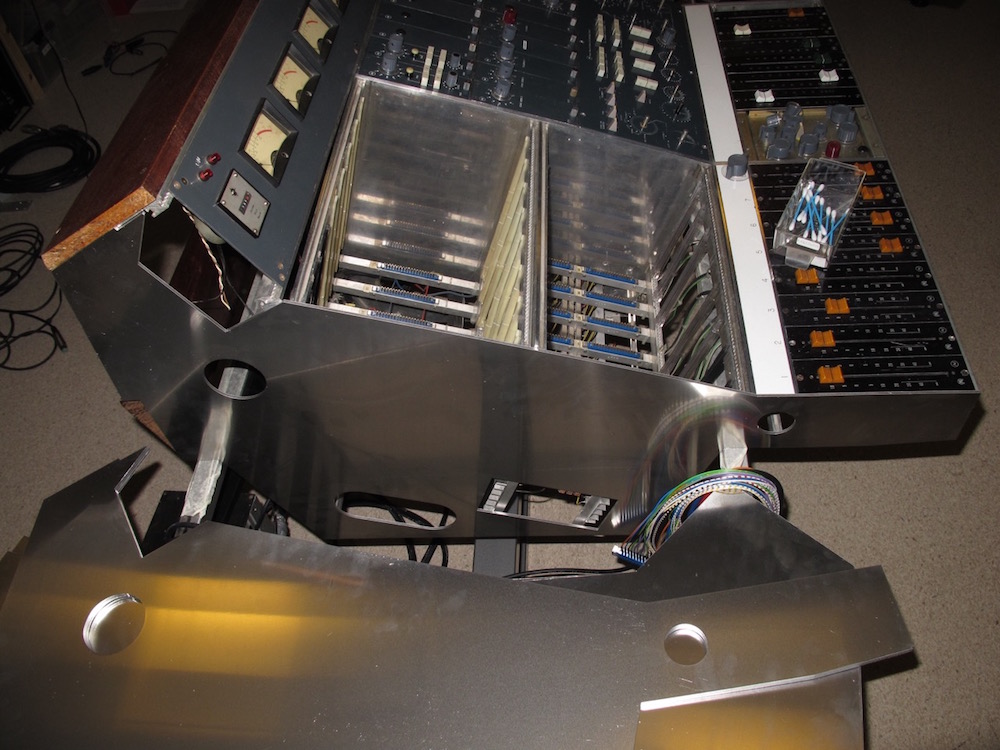
Then i used the original panel as a template and drilled out all the holes.
I carefully tapped and countersunk all the holes in the right places, there are so many holes that need to be done so it is very easy to tap or countersink the wrong one (yes, i did at least one of them wrong!).
This was insane work and i did it all by hand.
If i ever do something similar again in the future i will draw in all the holes in the cad drawing from the start.
That would give me even better tolerances for the holes, it is a bit tricky to do it all by hand.
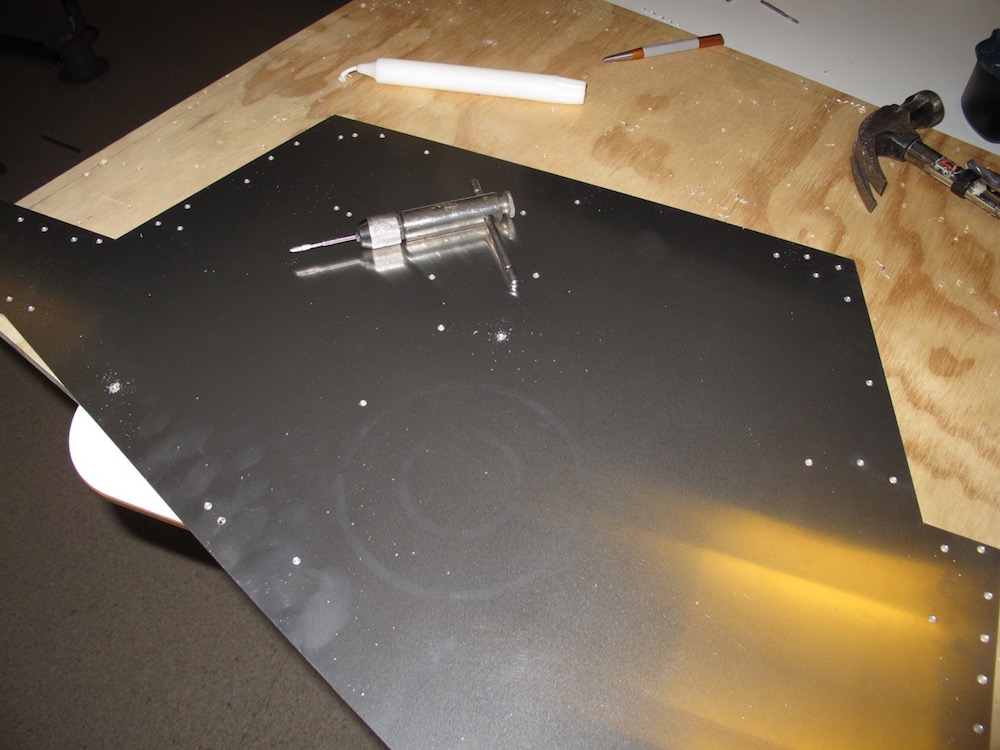
Here are my three panels ready to be assembled!
What i came to realize is that the original desks actually uses six different panels in the desk that need to be drilled and countersunk differently.
There are the two outer panels on each side and then the two panels between each bucket which are all different.
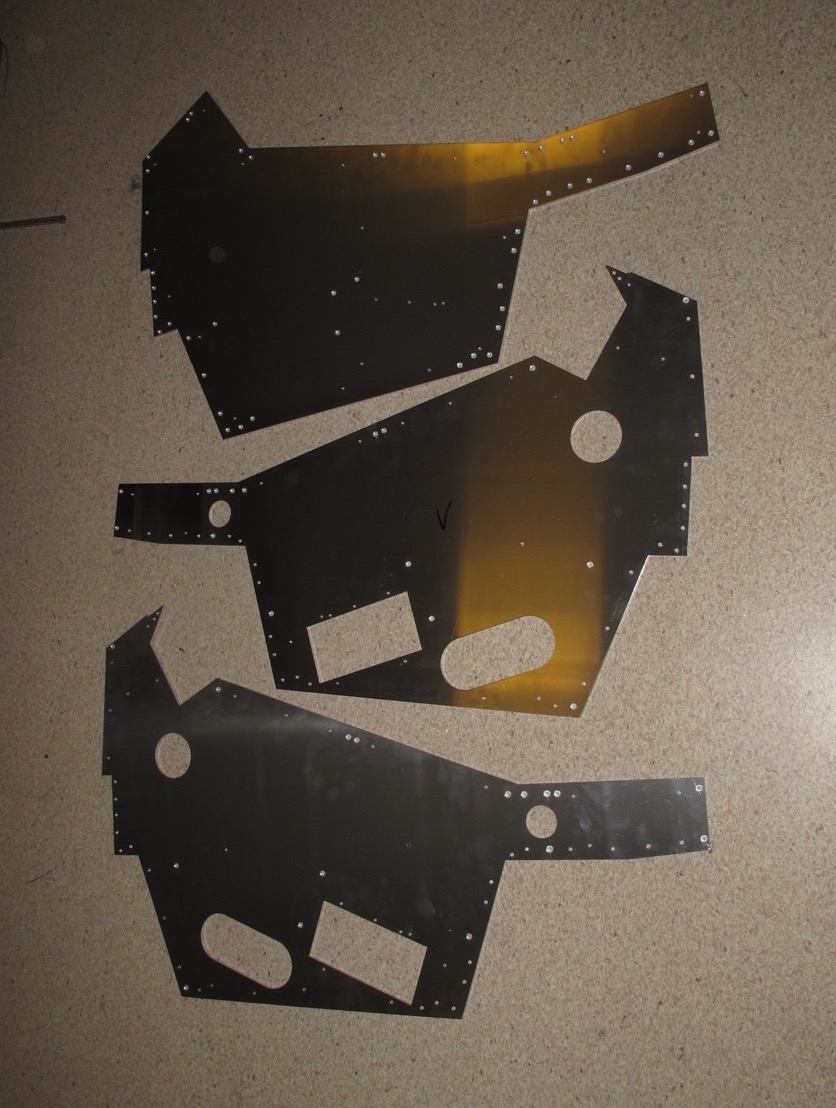
For this build i opted to remove the original panel to the left in the desk and replace it with a new one.
This was so i could more easily attach the new bucket into a new panel and get a better fit.
Och tack till mina Svenska vänner!
Next up was doing some sidepanels at the metalshop.
It was easier and cheaper than a thought doing lasercut panels from the cad drawing.
The original Neve panels were made 3.2mm alu but could only find 3mm these days so went with that.
Not sure why Neve used so many inch related measures in their production, Ian do you know?
The first thing i had to do though was to build a new stand for the desk that would incorporate the new bucket.
Luckily i have a friend who owns a 8014 so i could study that and make up a drawing so it would look more or less the same.
These early desks and the 8014 uses a stand where the whole frame sits in it like a cradle.
Not the best design in my opinion since you can create sag in the middle from the wheight, so the frame have to be sturdy.
It is also hard to get the cradle leveled when you weld it, something i would notice a bit further on....
But there are no other options for this type of frame so i went ahead with the original design.

Next up was to remove the original sidepanel and dryfitting one of my new ones.
Looks good!

Then i used the original panel as a template and drilled out all the holes.
I carefully tapped and countersunk all the holes in the right places, there are so many holes that need to be done so it is very easy to tap or countersink the wrong one (yes, i did at least one of them wrong!).
This was insane work and i did it all by hand.
If i ever do something similar again in the future i will draw in all the holes in the cad drawing from the start.
That would give me even better tolerances for the holes, it is a bit tricky to do it all by hand.

Here are my three panels ready to be assembled!
What i came to realize is that the original desks actually uses six different panels in the desk that need to be drilled and countersunk differently.
There are the two outer panels on each side and then the two panels between each bucket which are all different.

For this build i opted to remove the original panel to the left in the desk and replace it with a new one.
This was so i could more easily attach the new bucket into a new panel and get a better fit.
Hi again!
Long time since i posted in the thread but have been working hard on the desk since my last one.
So i thought i would continue and show the final part of the restoration.
So, after i had manufactured the new sidepanels and drilled and tapped all holes it was time to put the new bucket together and see if it all fits.
I ordered the ISEP rails precut in the correct lenghts from the UK so it was quite easy to mount it all together.
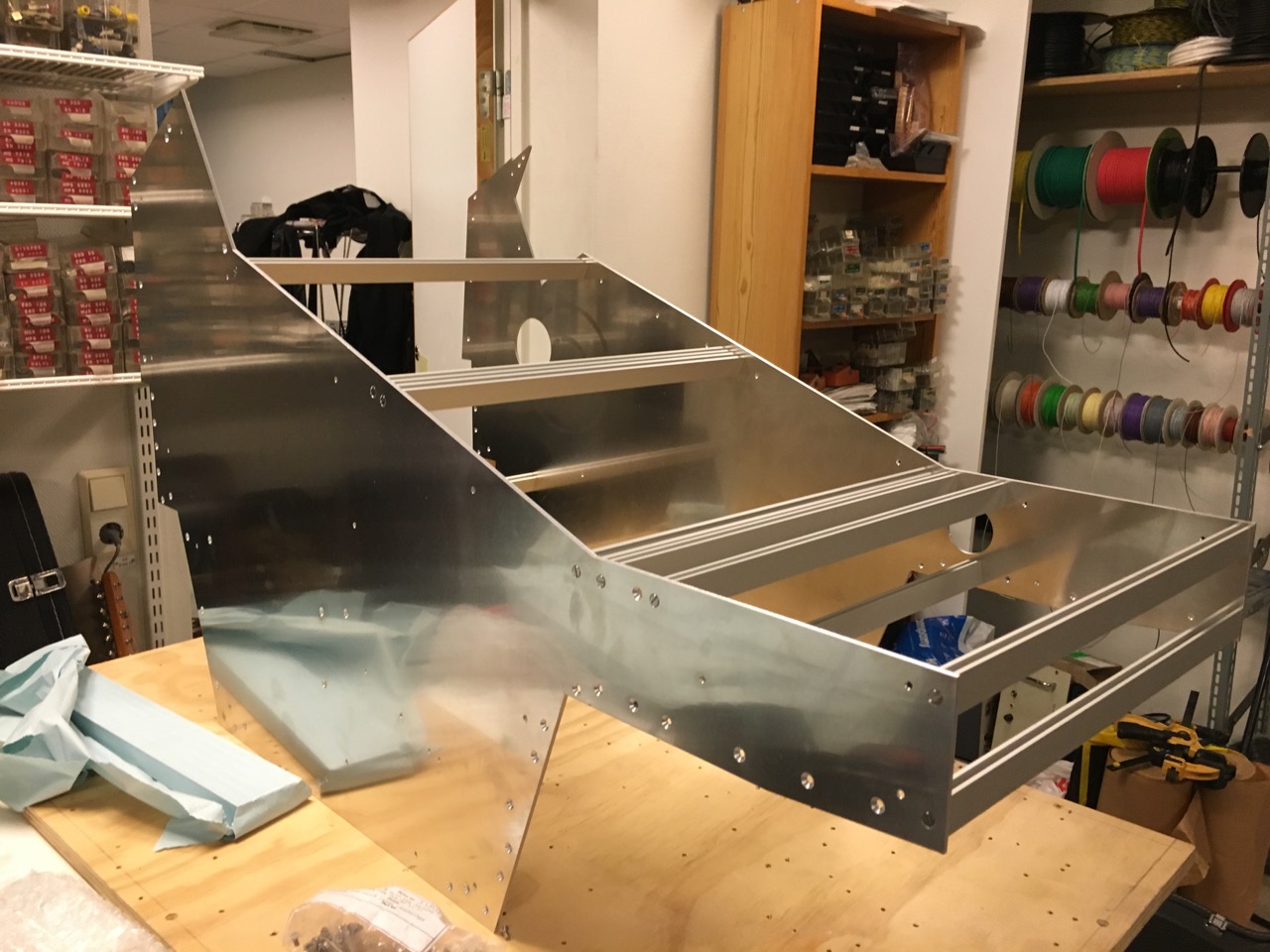
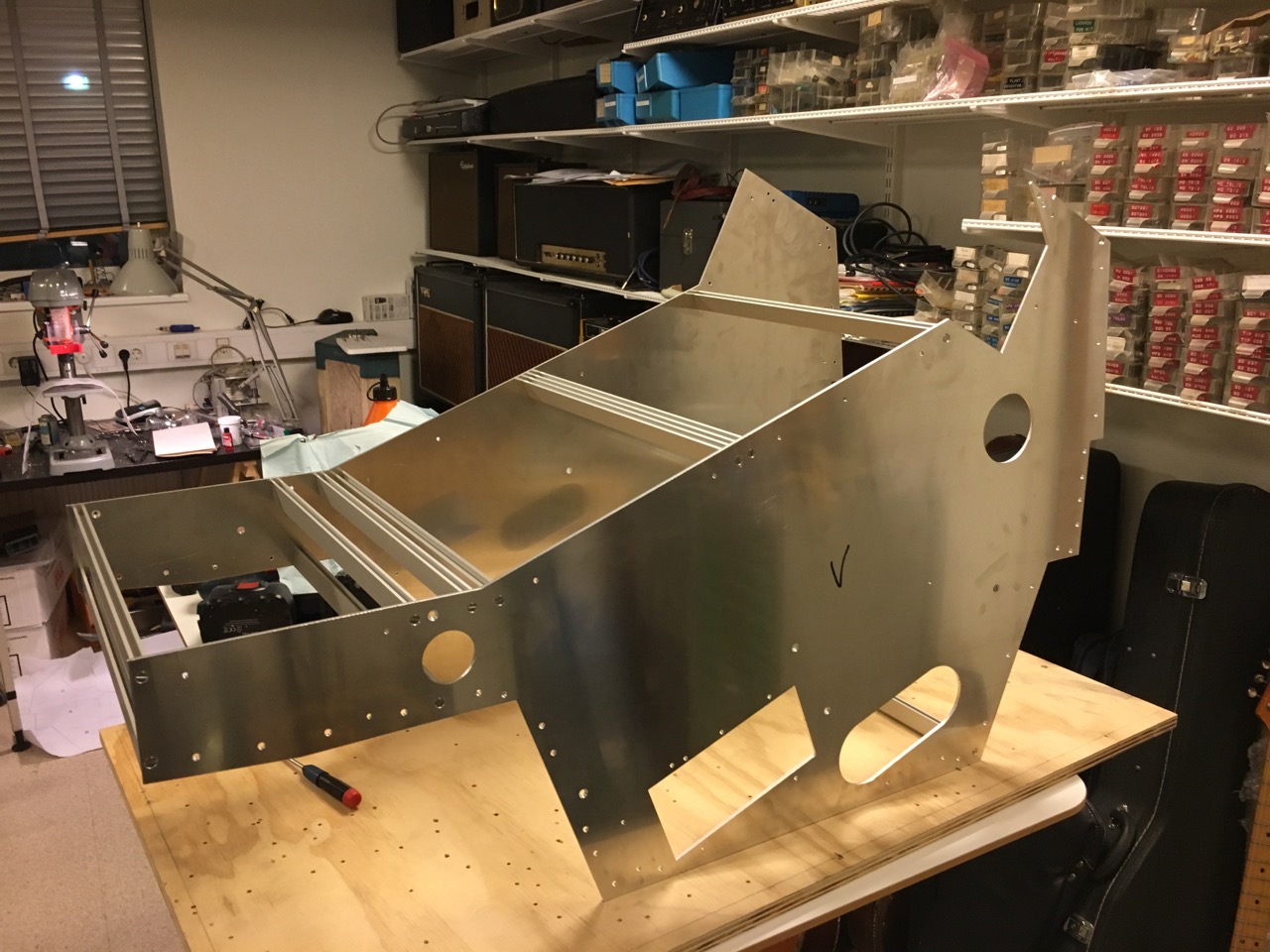
Some modules dryfitted and they seem to fit perfectly!
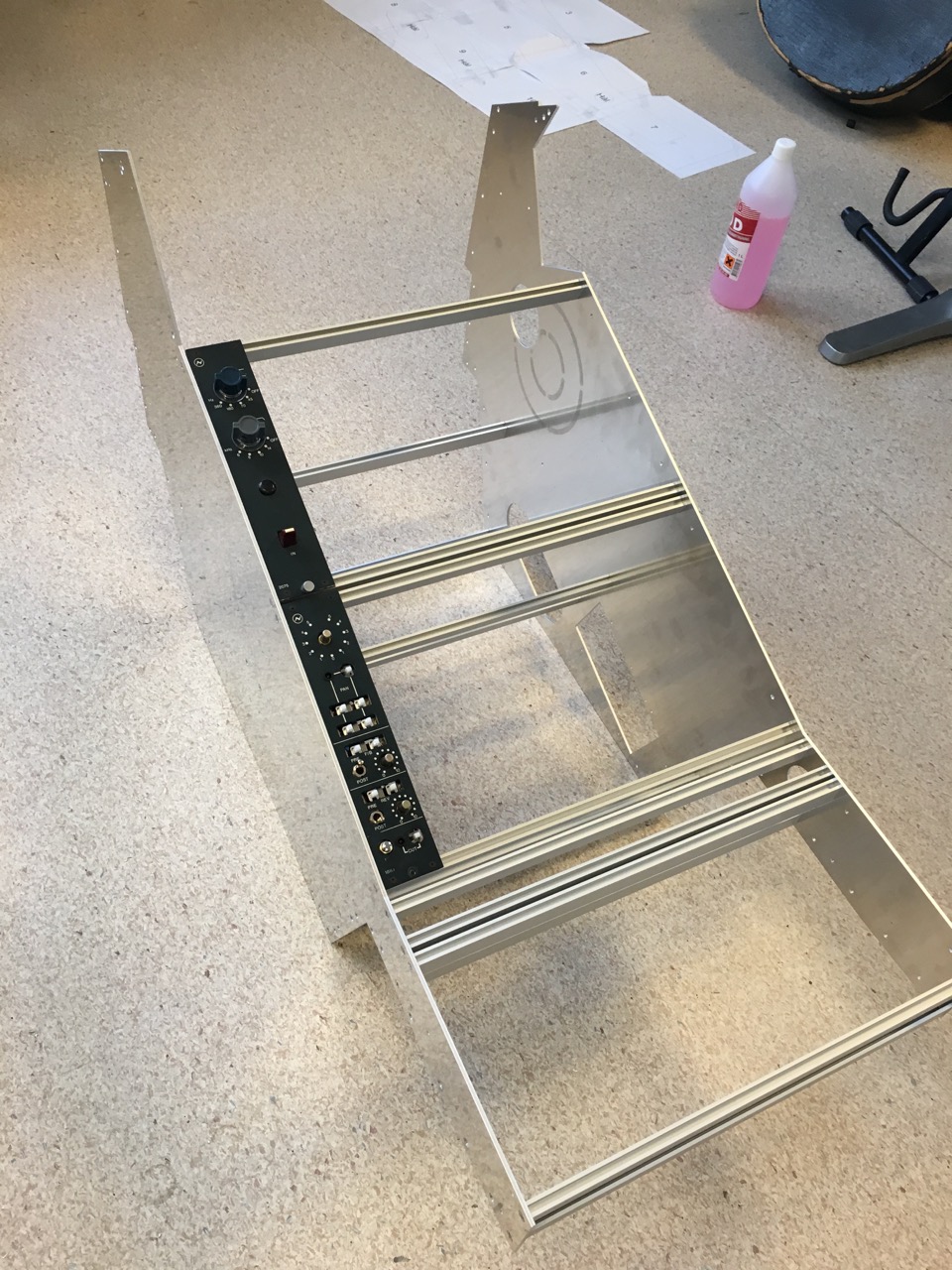
Next up i dryfitted the bucket to the frame and it fits perfectly there as well.
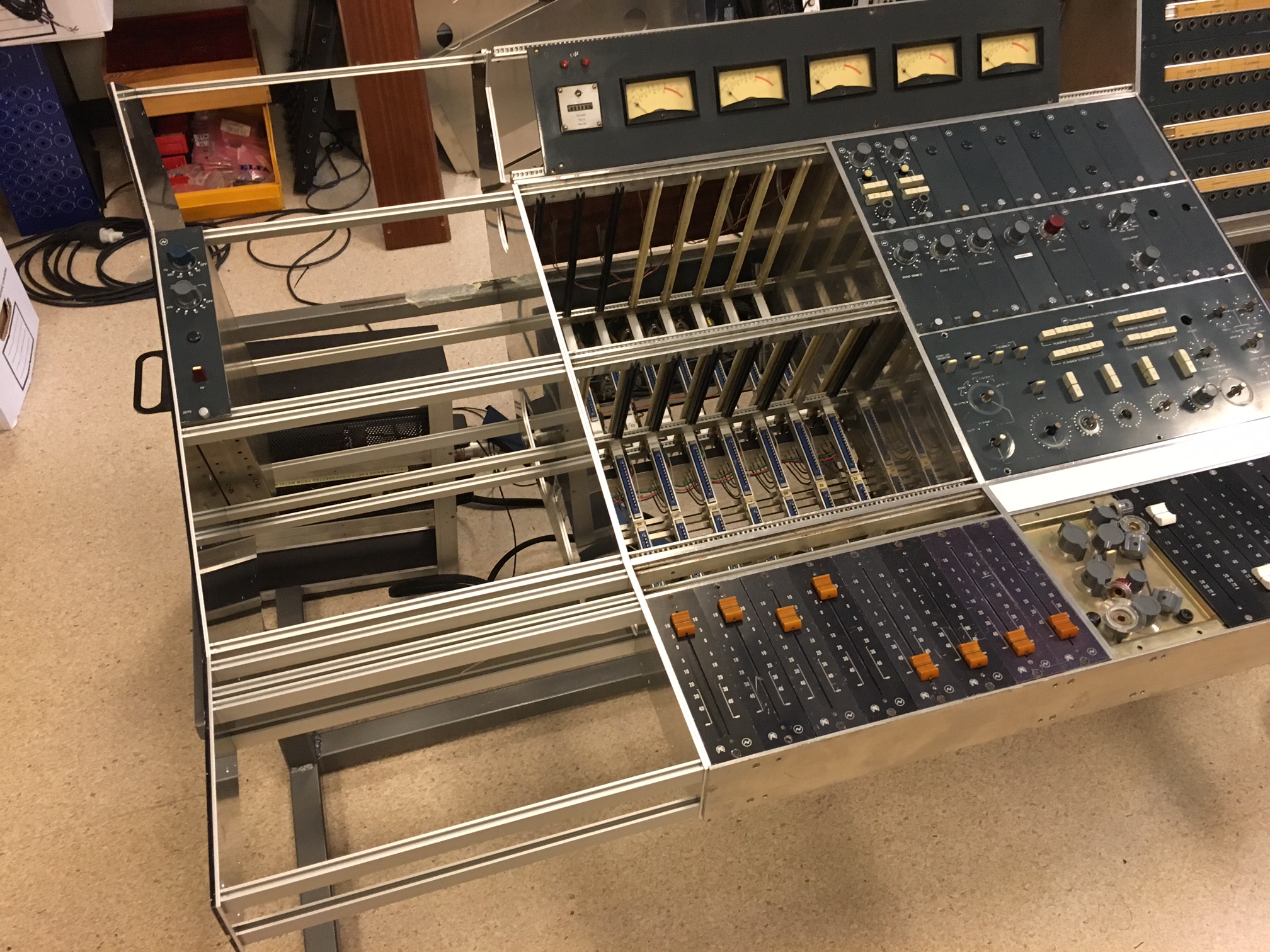
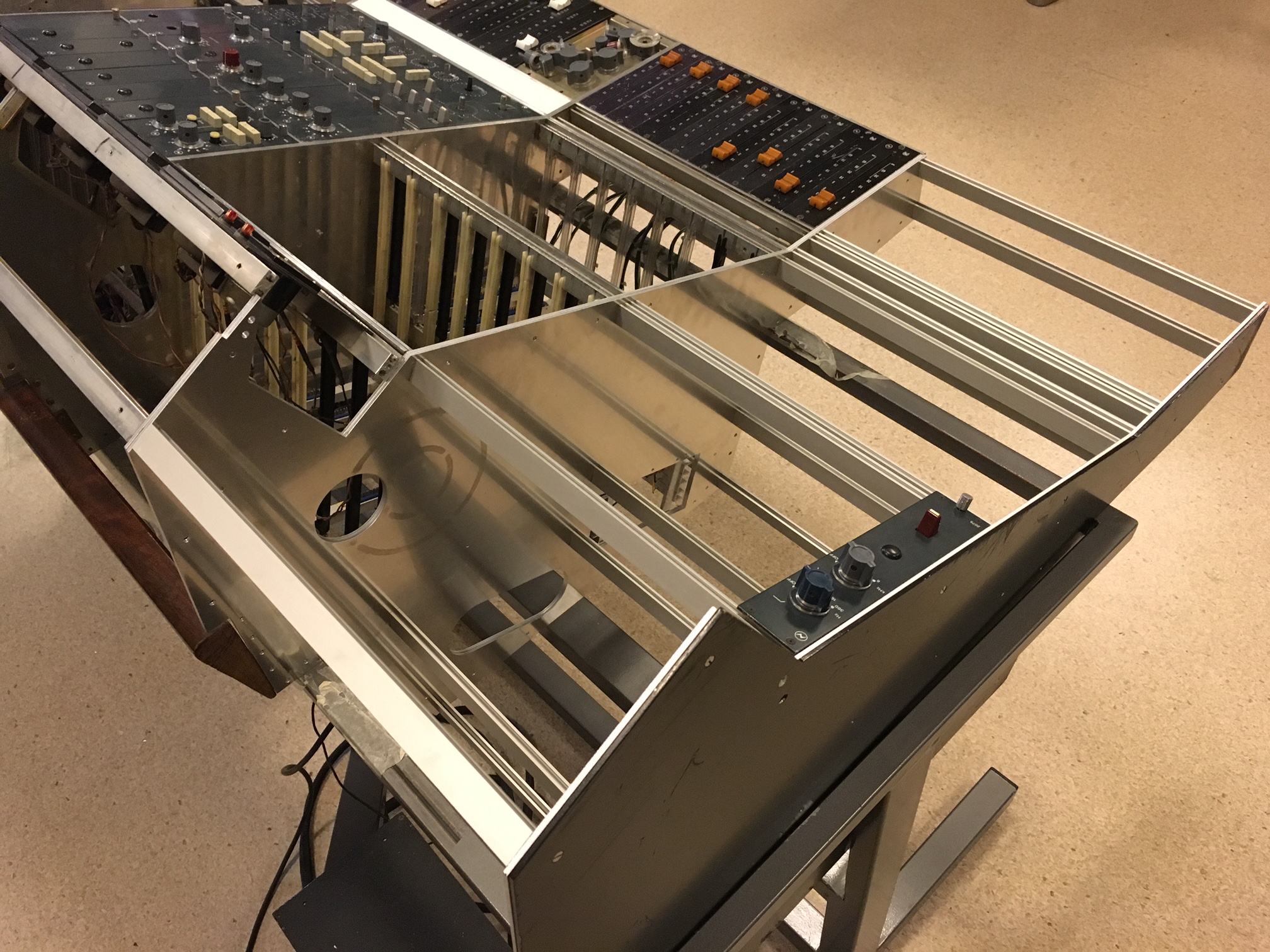
Now its starting to look loke a proper console again!

Happy new year to you all and my New Years promise is to post more about the restoration in the next year...!
Long time since i posted in the thread but have been working hard on the desk since my last one.
So i thought i would continue and show the final part of the restoration.
So, after i had manufactured the new sidepanels and drilled and tapped all holes it was time to put the new bucket together and see if it all fits.
I ordered the ISEP rails precut in the correct lenghts from the UK so it was quite easy to mount it all together.


Some modules dryfitted and they seem to fit perfectly!

Next up i dryfitted the bucket to the frame and it fits perfectly there as well.


Now its starting to look loke a proper console again!

Happy new year to you all and my New Years promise is to post more about the restoration in the next year...!
jensenmann
Well-known member
You´re doing a great job, API! My maximum respect for your dedication to bring that desk back to it´s original glory.
ruffrecords
Well-known member
API said:The original Neve panels were made 3.2mm alu but could only find 3mm these days so went with that.
Not sure why Neve used so many inch related measures in their production, Ian do you know
Everything in the UK was imperial in those days. Remember we did not join the EU until 1973. It was only many years after that industry began to go metric. 3.2mm is one eighth of an inch which was a standard thickness for aluminium. Yards, feet and inches were invented in England and used throughout the empire - hence the term imperial measure. The Americans still use them.
I think those frames were made by an external contractor who managed to somehow achieve amazing tolerances. I agree, it is not the best designThe first thing i had to do though was to build a new stand for the desk that would incorporate the new bucket.
Luckily i have a friend who owns a 8014 so i could study that and make up a drawing so it would look more or less the same.
These early desks and the 8014 uses a stand where the whole frame sits in it like a cradle.
Not the best design in my opinion since you can create sag in the middle from the weight, so the frame have to be sturdy.
It is also hard to get the cradle leveled when you weld it, something i would notice a bit further on....
But there are no other options for this type of frame so i went ahead with the original design.
Cheers
Ian
Thank you Jensenmann!
Ian, thanks for the explanation.
I actually learned this fall that it was indeed the British that "invented" the inch but that its not longer used there.
There are a few places in the UK that o found that still supply metal in inches so i actually ordered some for the 2N3055 transistor heatsink i am copying for another build.
I think Neve realized the problem with these stands and from what i know they were only used on the 8014 desks.
It was a problem to get the welder to perfectly level the frame at the top, but more on that later.....
Ian, thanks for the explanation.
I actually learned this fall that it was indeed the British that "invented" the inch but that its not longer used there.
There are a few places in the UK that o found that still supply metal in inches so i actually ordered some for the 2N3055 transistor heatsink i am copying for another build.
I think Neve realized the problem with these stands and from what i know they were only used on the 8014 desks.
It was a problem to get the welder to perfectly level the frame at the top, but more on that later.....
Similar threads
- Replies
- 13
- Views
- 1K
- Replies
- 1
- Views
- 191
- Replies
- 2
- Views
- 757
Latest posts
-
-
-
RFT CM7151 reconstruction - plate voltage? Frequency response? Any info?
- Latest: Menschmeier
-
-
-
































